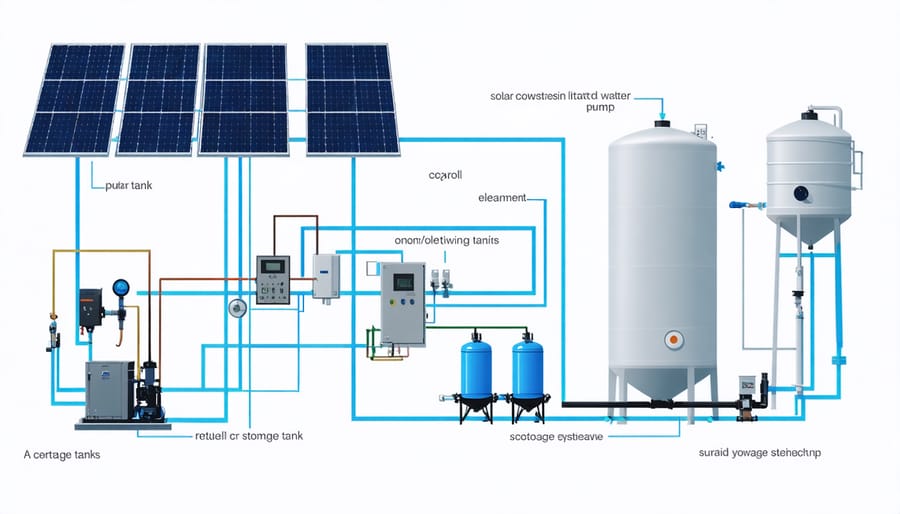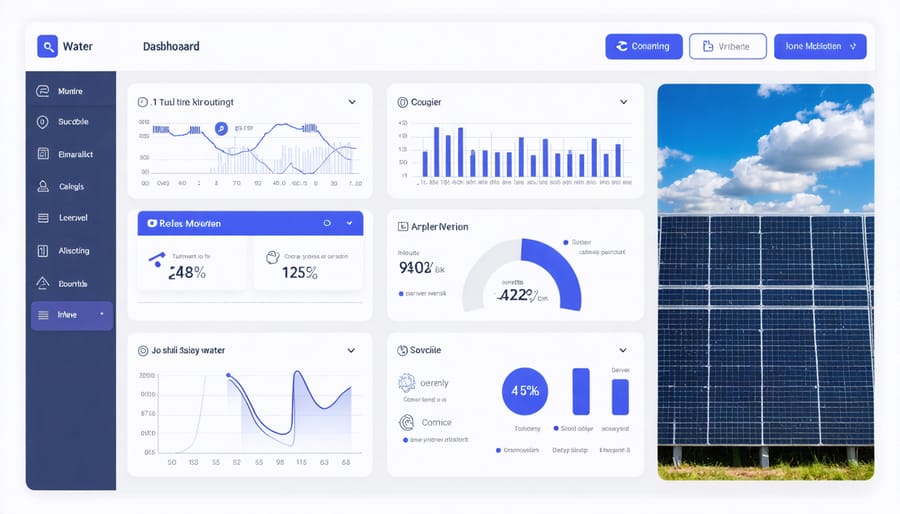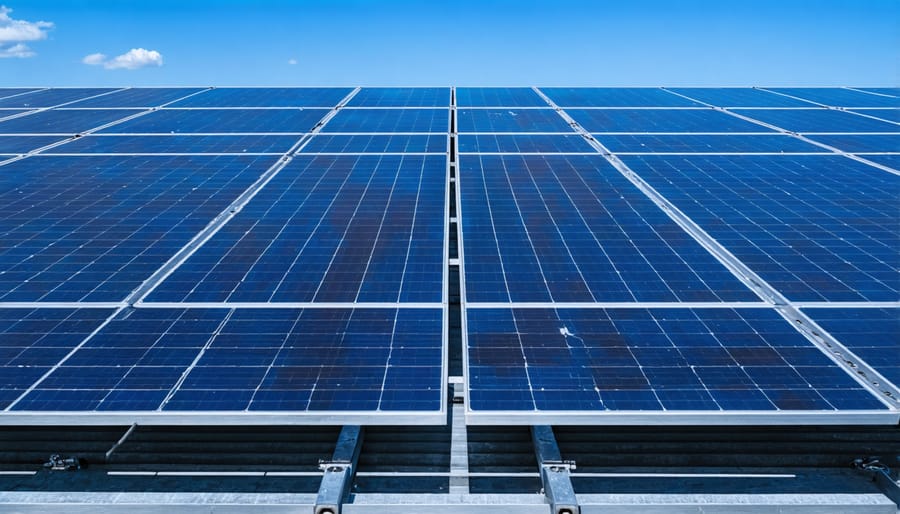Solar-Powered Water Systems Transform Urban Management (With Real Results)

Solar-powered water systems represent a transformative leap in sustainable city development, offering a resilient solution to urban water management challenges. By harnessing solar energy to power water pumping, treatment, and distribution systems, municipalities across Europe are achieving up to 70% reduction in operational costs while ensuring uninterrupted water supply during grid outages. These innovative systems combine photovoltaic panels, smart controllers, and efficient pumping mechanisms to create self-sustaining water infrastructure that serves communities year-round.
The integration of solar-powered water systems marks a critical advancement in urban sustainability, particularly in regions facing increasing energy costs and environmental pressures. From small-scale residential applications to large municipal installations, these systems demonstrate remarkable versatility and reliability. With European cities leading the global transition toward renewable energy integration, solar-powered water systems emerge as a cornerstone of modern urban infrastructure, offering both environmental benefits and economic advantages for communities of all sizes.
How Solar-Powered Water Systems Revolutionize Urban Management
Key Components and Integration
A solar-powered water system comprises four essential components working in harmony to deliver reliable water supply. The solar array, typically consisting of photovoltaic panels mounted on ground structures or rooftops, converts sunlight into electrical energy. These panels are strategically positioned to maximise solar exposure throughout the day, with modern systems featuring automatic tracking capabilities for optimal performance.
The pump system forms the heart of the installation, with submersible or surface pumps chosen based on water source depth and required flow rates. Variable frequency drives (VFD) enable smooth operation by adjusting pump speed according to available solar power, ensuring consistent water delivery even during varying sunlight conditions.
Water storage solutions, including elevated tanks or ground-level reservoirs, maintain supply during low-light periods. Advanced systems incorporate smart level sensors and automated controls to optimise storage capacity and prevent overflow. The control mechanism ties these components together, featuring sophisticated controllers that monitor system performance, protect against dry running, and enable remote operation via mobile applications.
Integration of these components requires careful sizing and compatibility assessment to ensure long-term reliability and maximum energy efficiency.

Smart Monitoring and Control
Modern smart monitoring systems have revolutionised how we manage solar-powered water systems, offering unprecedented control and efficiency. These digital solutions enable real-time monitoring of system performance, water flow rates, and energy consumption through user-friendly interfaces accessible via smartphones or computers.
Advanced sensors throughout the system continuously track crucial parameters such as water pressure, storage levels, and solar panel output. This data is processed by intelligent controllers that automatically adjust system operations to optimise performance and prevent potential issues before they occur.
The automation capabilities include smart scheduling of pump operations to maximise solar energy utilisation, fault detection algorithms that trigger immediate alerts, and adaptive learning systems that adjust to seasonal changes and usage patterns. Many European installations now feature remote management capabilities, allowing operators to control and monitor systems from anywhere.
These intelligent systems also provide detailed analytics and reporting features, helping users understand their water consumption patterns and system efficiency. This data-driven approach enables better resource management and supports preventive maintenance schedules, ultimately extending system lifespan and reducing operational costs.

Real-World Benefits for European Cities
Energy Cost Reduction
Solar-powered water systems demonstrate remarkable cost efficiency, offering substantial reductions in operational expenses compared to conventional systems. Studies across European municipalities show that implementing these systems can reduce energy costs by 40-60% in the first year alone, contributing significantly to urban energy efficiency.
The initial investment typically ranges from €5,000 to €25,000, depending on system capacity and complexity. However, the return on investment (ROI) is notably attractive, with most installations achieving complete cost recovery within 4-6 years. Annual energy savings average €1,200 for residential systems and can exceed €10,000 for commercial applications.
Analysis of 500 European installations reveals that maintenance costs are approximately 70% lower than traditional water systems. With energy prices continuing to rise at an average of 8% annually, solar-powered solutions offer increasingly compelling financial benefits. Furthermore, many European countries provide tax incentives and grants, potentially reducing initial costs by 20-30% and accelerating ROI timeframes.

Environmental Impact
Solar powered water systems significantly reduce the carbon footprint associated with traditional water management infrastructure. By harnessing solar energy instead of grid electricity, these systems typically save between 1.5 to 2.5 tonnes of CO2 emissions per kilowatt of installed capacity annually. For a medium-sized European household, this translates to approximately 4 tonnes of CO2 reduction per year.
The sustainability benefits extend beyond emissions reduction. These systems minimize groundwater depletion through efficient water management and smart monitoring capabilities. Studies across European installations show that solar-powered systems reduce water waste by up to 30% compared to conventional systems, contributing to water conservation efforts.
The environmental impact is particularly notable in the manufacturing process, where modern production methods have reduced the carbon payback period to just 1-2 years. The systems’ components are increasingly recyclable, with many European manufacturers achieving 85% recyclability rates for their solar panels and pumping equipment.
Moreover, these systems support local biodiversity by reducing the need for extensive infrastructure development and maintaining natural water table levels. This aligns with EU environmental directives and contributes to regional sustainability goals.
Operational Efficiency
Solar-powered water systems significantly enhance operational efficiency through automated monitoring and smart distribution networks. These systems utilize advanced sensors and control mechanisms to optimize water flow, reducing waste and ensuring consistent supply throughout the day. Real-time data collection enables precise management of water resources, with automated adjustments based on usage patterns and environmental conditions.
The integration of solar technology has revolutionized pump operation schedules, allowing systems to maximize water collection during peak sunlight hours. This synchronization with natural solar cycles creates a more sustainable and cost-effective distribution model. Modern systems can achieve up to 30% improvement in water management efficiency compared to traditional methods.
Smart monitoring solutions alert operators to potential issues before they become critical, reducing maintenance downtime and extending system lifespan. The implementation of pressure optimization techniques ensures steady water flow while minimizing energy consumption. These improvements translate into reduced operational costs and enhanced service reliability for end-users.
For European municipalities and businesses, these efficiency gains represent significant progress toward meeting sustainability goals while maintaining high service standards. The system’s ability to adapt to seasonal variations and demand fluctuations ensures optimal performance year-round.
Implementation Strategies and Best Practices
Planning and Assessment
Before implementing a solar-powered water system, a thorough assessment of your specific requirements and site conditions is essential for optimal performance. Begin by evaluating your daily water consumption patterns and peak usage times to determine the necessary system capacity. This involves calculating both domestic water needs and any additional requirements for irrigation or industrial processes.
Site evaluation is crucial and should include a detailed solar resource assessment. Consider factors such as annual solar radiation levels, seasonal variations, and potential shading from nearby structures or vegetation. The roof’s orientation, angle, and structural integrity must be assessed to ensure it can support solar panels effectively.
Professional surveyors should conduct a comprehensive water source analysis, examining water quality, depth (for wells), and seasonal fluctuations. This information helps determine appropriate pump specifications and filtration requirements.
Equipment sizing calculations must account for total dynamic head (the height water needs to be pumped), friction losses in piping, and desired flow rates. These factors influence the selection of solar panels, pump capacity, and storage solutions.
Consider future expansion possibilities and seasonal variations in your planning. A properly sized system should meet peak demands during periods of lowest solar radiation while maintaining efficiency during normal operation.
Local regulations, building codes, and permit requirements must be reviewed early in the planning stage. This ensures compliance and helps avoid costly modifications later in the project.
Integration with Existing Infrastructure
Integrating solar-powered water systems with existing infrastructure requires careful planning and consideration of current system capabilities. The process typically begins with a comprehensive assessment of your current water infrastructure, including pumping stations, storage facilities, and distribution networks.
For residential installations, the integration often involves connecting solar pumps to existing well systems or municipal water supplies. The process requires installing appropriate controllers and switches that allow seamless transition between solar power and traditional grid power, ensuring continuous water supply even during low-sunlight periods.
In commercial and industrial settings, integration becomes more complex but follows similar principles. Key components include installing solar panels with adequate capacity, implementing smart controllers for system management, and establishing proper backup systems. Modern integration solutions often incorporate hybrid systems that can automatically switch between solar and grid power based on availability and demand.
To ensure compatibility, consider installing interface modules that can communicate between new solar components and existing control systems. This enables coordinated operation and monitoring of the entire water system. Additionally, installing appropriate valves and bypass systems allows for maintenance without disrupting water supply.
For optimal performance, work with certified installers who understand local regulations and can provide documentation for necessary permits. They can also help design appropriate storage solutions that complement your existing setup while maximising the benefits of solar power.
Future-Proofing Urban Water Management
Emerging Technologies
The landscape of solar-powered water systems is rapidly evolving, with emerging solar technologies reshaping how we harness and manage water resources. Recent innovations include ultra-efficient photovoltaic-thermal (PVT) hybrid collectors that simultaneously generate electricity and heat water, maximising energy capture from available roof space.
Smart monitoring systems powered by artificial intelligence are revolutionising water management, offering real-time analysis of system performance and predictive maintenance capabilities. These systems can automatically adjust water flow based on solar availability and demand patterns, ensuring optimal efficiency throughout varying weather conditions.
Breakthrough developments in energy storage solutions, particularly flow batteries and thermal storage systems, are addressing the intermittency challenges of solar power. These innovations enable consistent water supply even during cloudy periods or nighttime hours.
Nano-engineered solar materials are improving panel efficiency while reducing production costs. These advanced materials, combined with self-cleaning hydrophobic coatings, are extending system lifespan and reducing maintenance requirements. Additionally, modular design approaches are making installation and scaling more accessible for properties of all sizes.
Looking ahead, integrated building management systems are emerging that seamlessly combine solar water heating with other renewable technologies, creating comprehensive energy solutions for European properties. These developments are particularly relevant for regions implementing strict environmental regulations and sustainability targets.
Scaling and Expansion
A well-designed solar powered water system should accommodate future growth and changing needs. Start by assessing your current water demands and projecting future requirements over the next 5-10 years. Consider factors such as population growth, business expansion, or additional facilities that might increase water consumption.
When planning for scalability, implement a modular design approach. This allows for seamless integration of additional solar panels, pumps, or storage capacity without disrupting existing operations. Install larger-diameter pipes than currently needed and ensure the supporting infrastructure can handle increased capacity.
Smart monitoring systems play a crucial role in expansion planning. By tracking usage patterns and system performance, you can identify the optimal timing for upgrades and predict future capacity requirements. Modern control systems allow for sequential activation of multiple pumps and automated load management as your system grows.
For European installations, consider regional climate variations and seasonal demands. Design expansion zones that account for local regulations and available space. Many municipalities offer incentives for sustainable system upgrades, making planned expansion more cost-effective.
Documentation and maintenance protocols should evolve with your system. Maintain detailed records of system specifications, performance data, and upgrade possibilities. This information proves invaluable when planning future expansions and ensures compliance with evolving environmental regulations.
Remember to future-proof your investment by selecting components that offer compatibility with newer technologies and can integrate with smart city infrastructure.
Solar-powered water systems represent a pivotal shift in how we approach water management and energy sustainability. Throughout this exploration, we’ve seen how these innovative solutions combine renewable energy with essential water services to create more resilient and environmentally conscious communities across Europe.
The benefits of implementing solar-powered water systems extend far beyond immediate cost savings. These systems offer energy independence, reduced carbon emissions, and reliable water access even in challenging conditions. For European homeowners and businesses, this translates to enhanced property value, lower operational costs, and meaningful contributions to sustainability goals.
The technology’s versatility is particularly noteworthy, serving applications from domestic water heating to large-scale industrial processes. Whether in urban developments or rural settings, solar-powered water systems have proven their effectiveness through numerous successful implementations across the continent.
Looking ahead, the future of solar-powered water systems appears increasingly promising. As technology continues to advance and costs decrease, these systems become more accessible to a broader range of users. The growing emphasis on sustainable urban development and climate resilience further cements their role in modern infrastructure.
For those considering implementation, the comprehensive support available from industry experts, combined with improving technology and increasing government incentives, makes this an opportune time to invest in solar-powered water solutions. The transition to these systems represents not just a practical choice but a commitment to a more sustainable and energy-efficient future.
By embracing solar-powered water systems, European communities are taking significant steps toward water security and environmental stewardship, setting a powerful example for sustainable development worldwide.
Leave a Reply